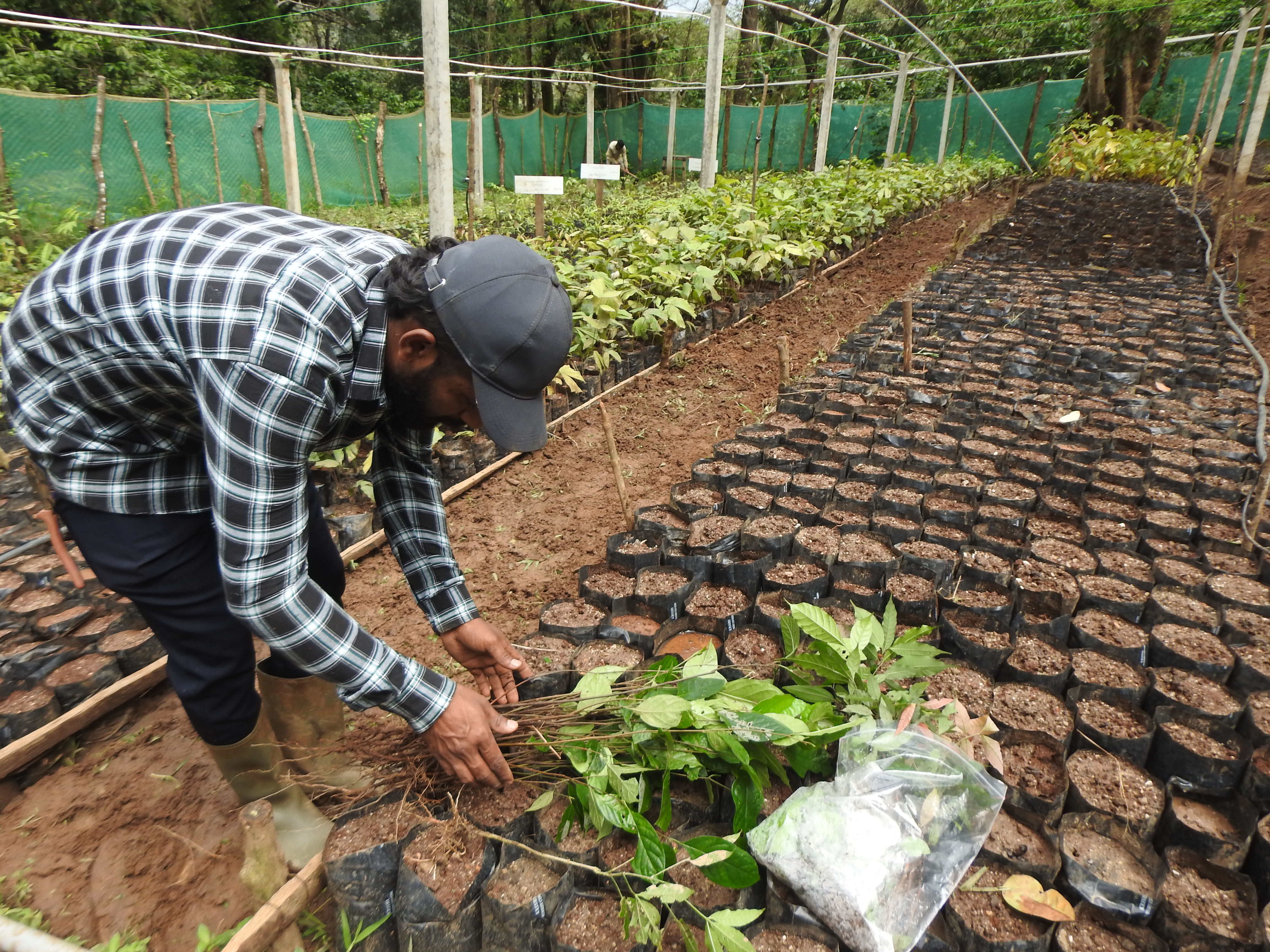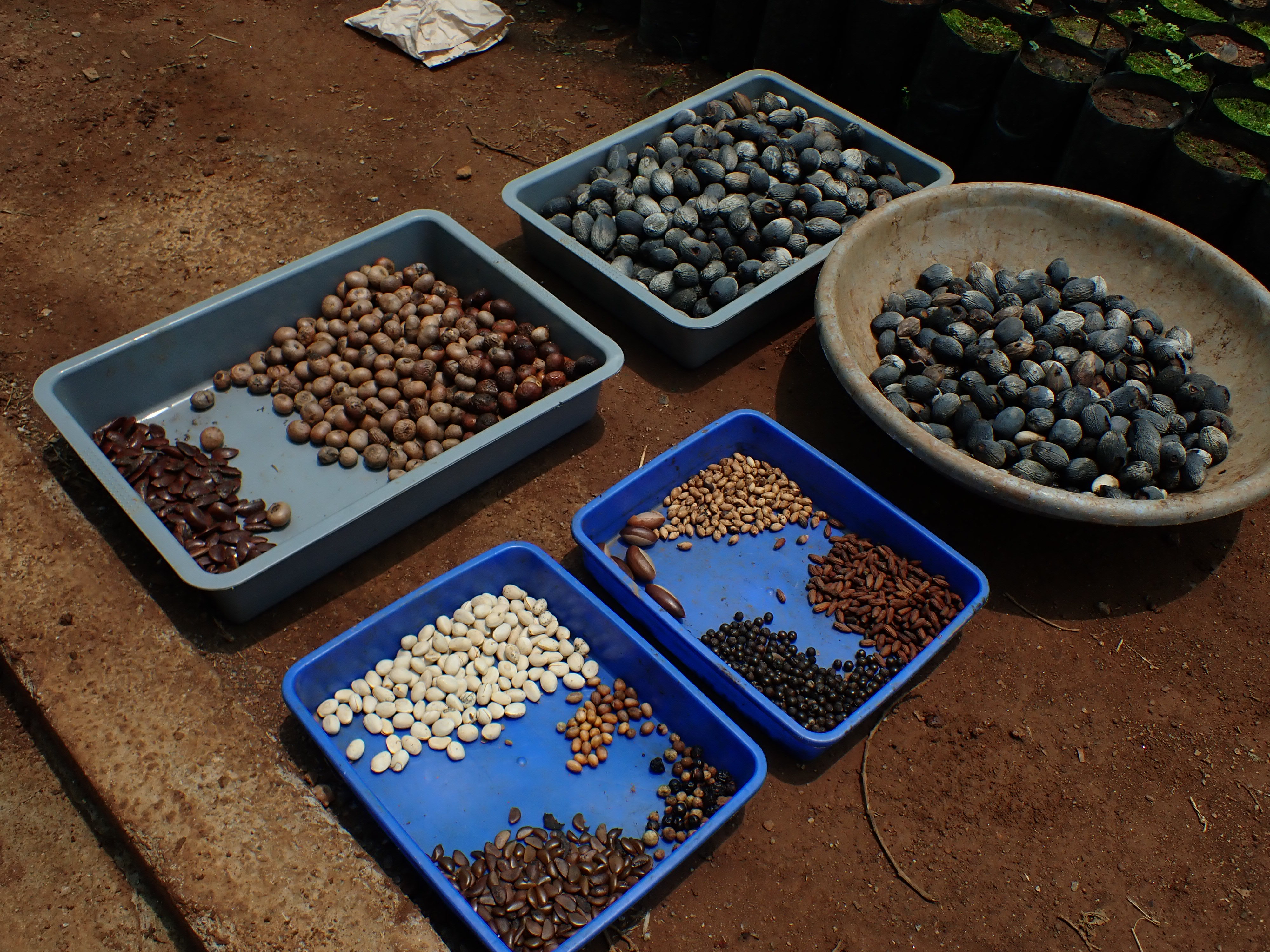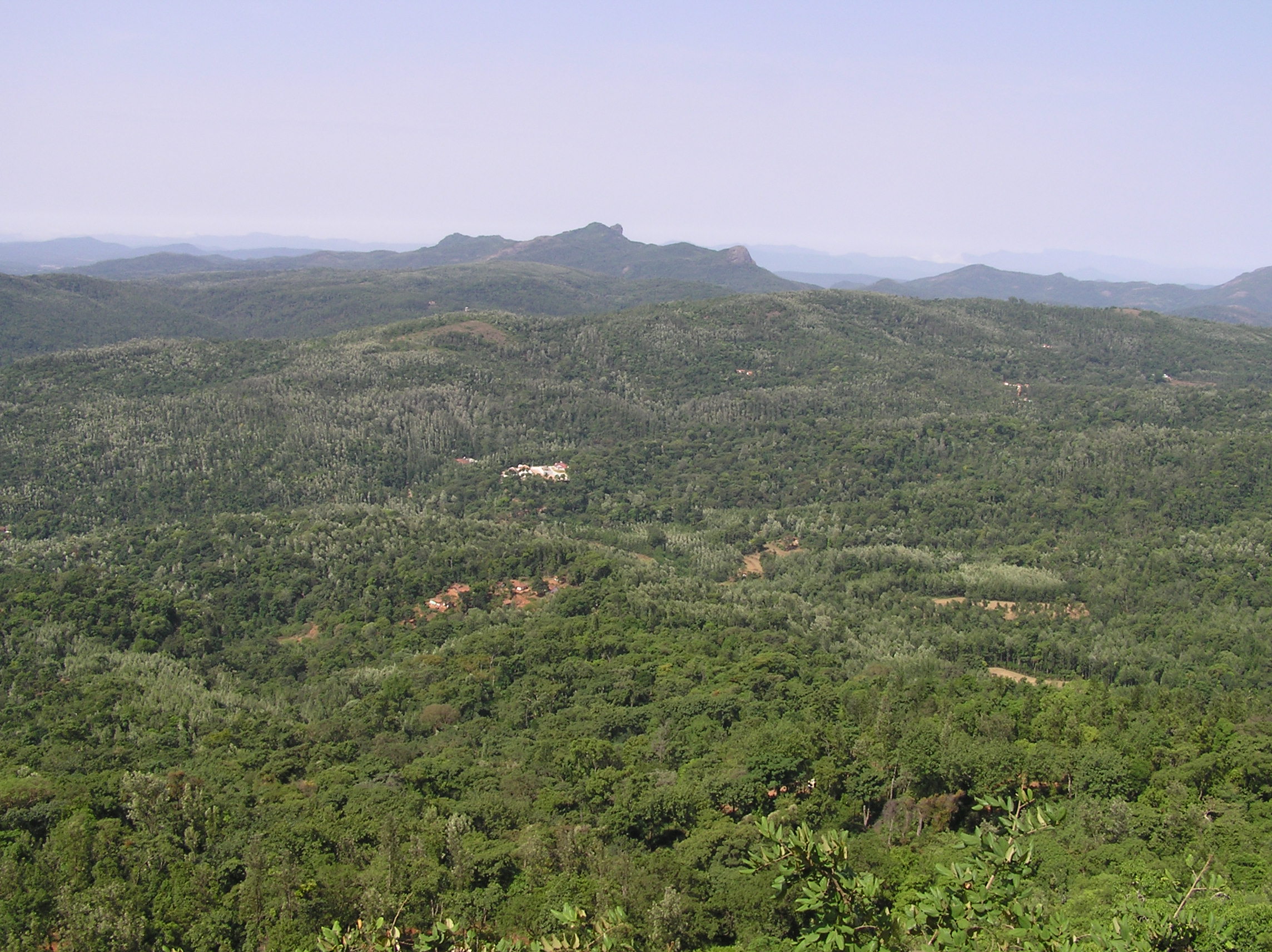
Seedlings of multiple native tree species rescued from coffee agroforests prior to replanting at a restoration nursery. © Vijay Kumar.
Coffee agroforests could hold the key to scaling up the restoration of native plants in the Western Ghats, according to new research by a group of restoration scientists and several agroforest leaders in the region.
Published in the Journal of Applied Ecology, the study, titled “Shade coffee agroforests as native plant sources for restoration,” proposes rescuing restoration- and conservation-relevant native species of seeds and seedlings from shade coffee agroforests, then transferring them to local native plant nurseries.
Scaling up restoration efforts for native plants in the Western Ghats is becoming increasingly important as they continue to experience slow but certain degradation, challenging the region’s status as one of the leading biodiversity hotspots in the world. Under the UN Paris Agreement, which legally obligates signatories to fight climate change by keeping global warming well below 2°C, India has agreed to create a carbon sink of between 2.5 and 3 billion tonnes by 2030. This commitment will be achieved by enhancing forest cover, and regenerating native plant and tree species will be crucial to its accomplishment.

Lead author of the study, scientist Anand Osuri, and his team at the Nature Conservation Foundation (NCF) have been searching for regeneration solutions since 2023. In August 2025, their journey featured in a short documentary by Scroll called, “Eco India: How coffee is solving Western Ghats’ biodiversity crisis,” and received over 31,000 views in five days (watch the YouTube video here). Their work was also spotlighted in Mongabay.
In their hunt for restoration solutions, the team has faced several challenges, including a lack of native tree species and the absence of a good system for seed collection. The prospect of taking large amounts of seeds from remnant natural forests and planting them elsewhere raised ethical issues, as this would take food away from animals and insects that rely on them.
“It is also important to ensure that seed collection for nurseries does not overexploit or damage natural regeneration in our remaining native forests,” the researchers explain in a press release.

Thankfully, native plants located in shade coffee agroforests have proven to be viable alternatives to natural forests. During the study, researchers examined the abundance and species composition of shade trees by sampling vegetation plots in eight agroforests across the Hassan and Chikmagalur Districts in Karnataka. Over 90 native tree species relevant for forest restoration were identified, including 30 species of exceptional conservation and restoration importance due to their being either endemic to the region or having a Threatened or Near Threatened status on the International Union for Conservation of Nature (IUCN) Red List.
When they are not “rescued”, the fate of seeds and seedlings in shade coffee agroforests is considerably less fruitful. “We use the word ‘rescue’ to highlight that the native seeds and seedlings are highly unlikely to survive where they are, because the slashing of understory vegetation is a widespread practice in coffee agroforests,” Anand reveals.
Since 2010, Anand has received four Rufford Small Grants for his research into forests and plants in the Western Ghats. His second Booster Grant helped fund the study. Speaking on its conservation importance, he says, “There are three key takeaways from our pilot project that can inform efforts to harness coffee agroforests as native plant sources for restoration. First, careful planning, including mapping seed source trees and monitoring their fruit cycles can produce more productive and cost-effective rescues. Second, native plant nurseries are a critical resource for scaling up rescue-to-restoration missions, and parallel efforts to develop nurseries and improve access to existing nursey infrastructure must be prioritised. Finally, while we highlight an opportunity for coffee farmers and landowners to amplify their contribution to biodiversity conservation and restoration, new policies and incentive schemes are needed to support this.”
Well done to Anand and his team for taking successful steps to help safeguard the rich biodiversity of the Western Ghats. Beyond rescuing plants, their work supports the preservation of the ecosystem for the people, animals and plants that benefit from these diverse forests.
Are you considering starting or accelerating your own conservation journey? Apply for a Rufford Small Grant today.